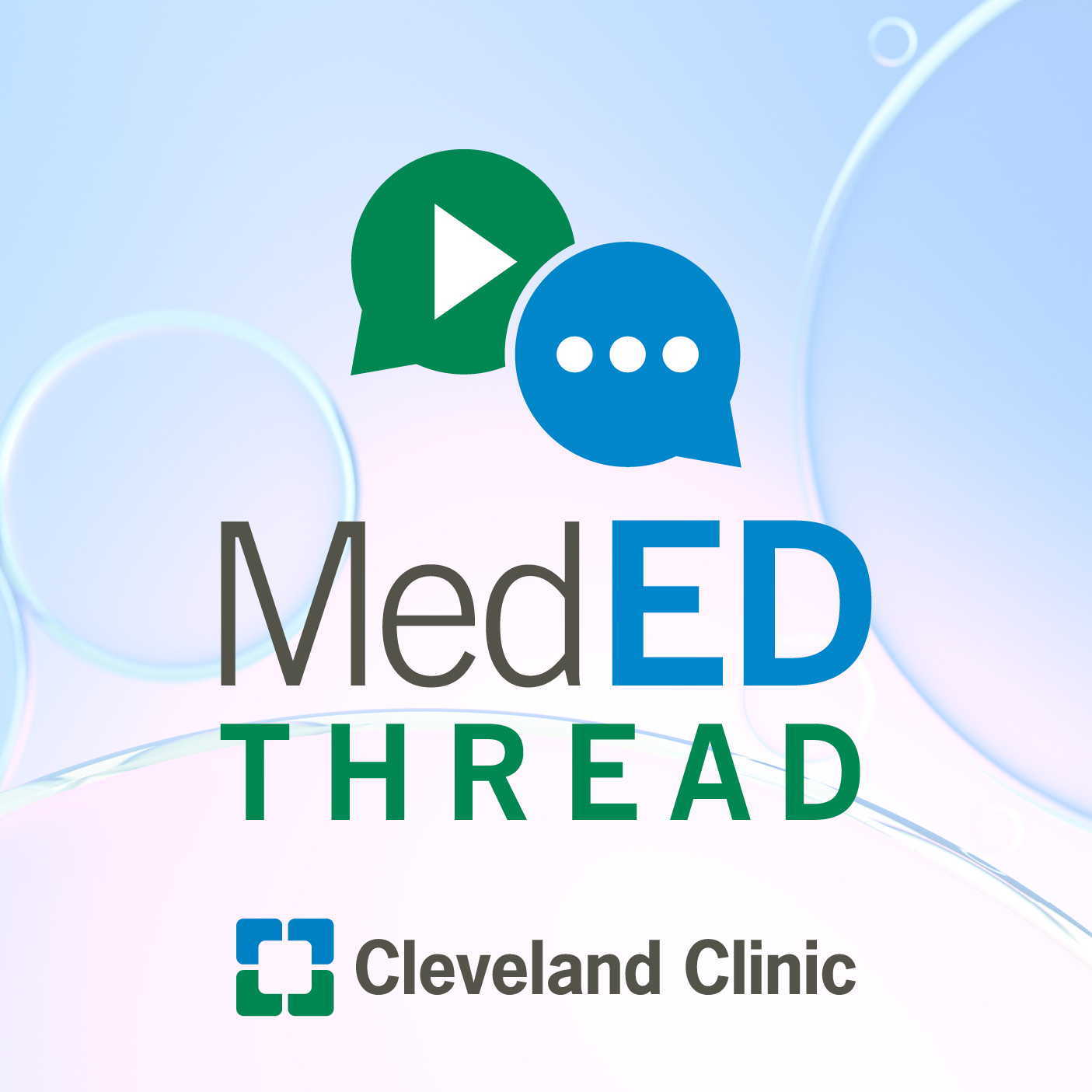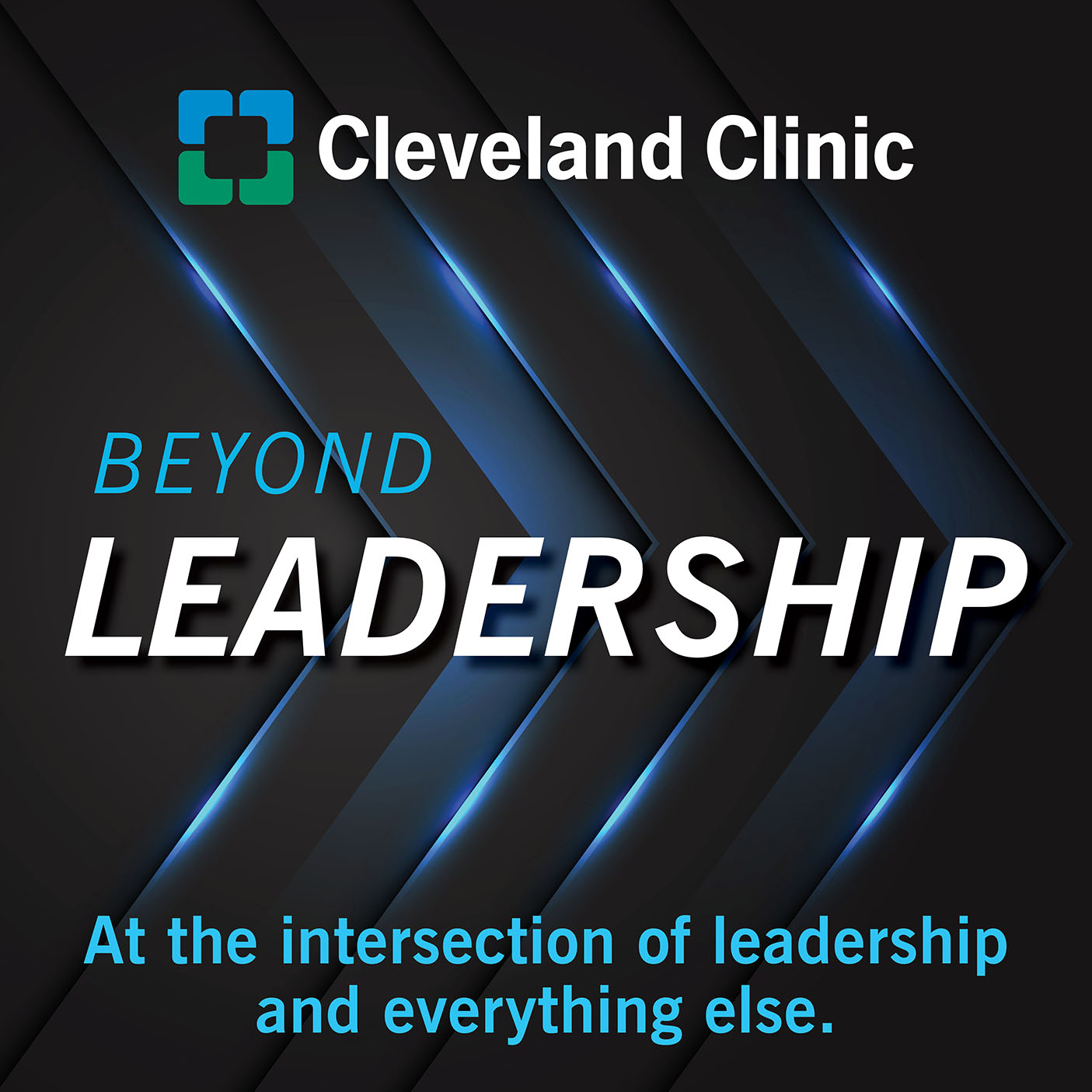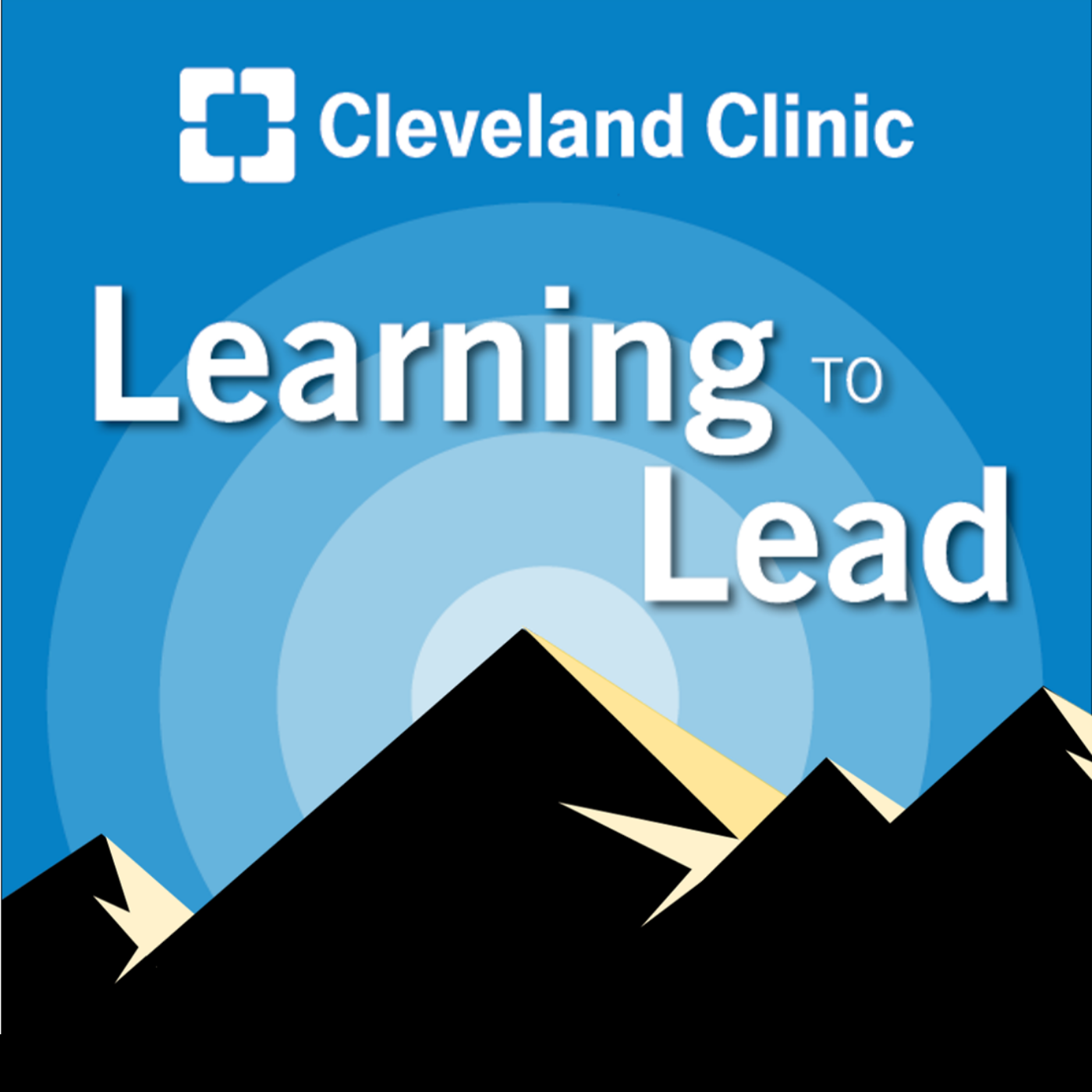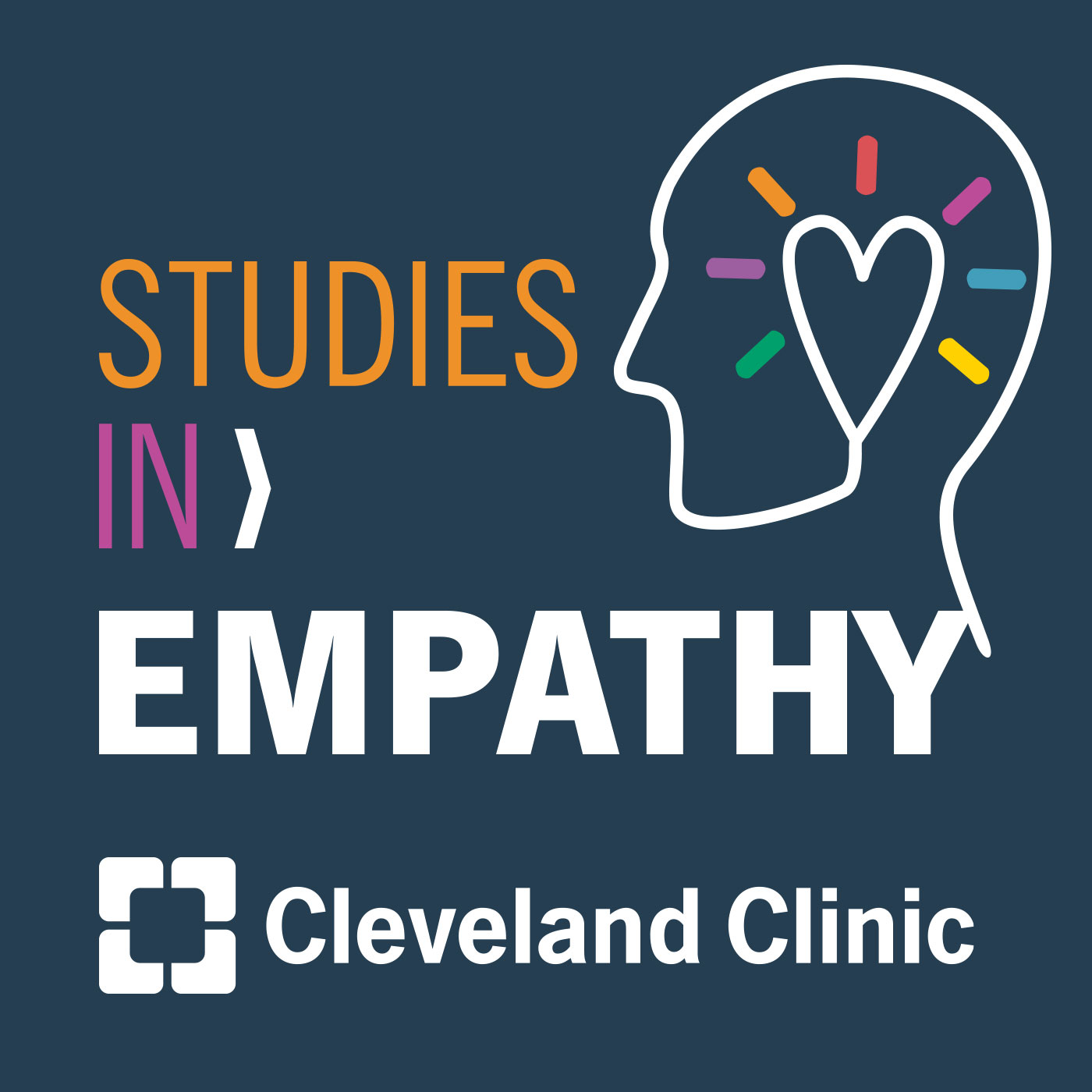Why Virtual Reality Won’t Replace Cadavers in Anatomy Training (Part 2)

In this episode, we talk with Dr. William Albabish, Director of Anatomy at Cleveland Clinic Lerner College of Medicine, as well as two Lerner College of Medicine students, Marcel Jean-Pierre and Patrick Potoczak, who navigate the debate surrounding the use of real bodies versus virtual models for teaching human anatomy and refining surgical skills. Through personal experiences, expert insights and considerations of ethical and emotional challenges, this episode explores the evolving landscape of anatomy education and its implications for medical training.
Subscribe: Apple Podcasts | Podcast Addict | Spotify | Buzzsprout
Why Virtual Reality Won’t Replace Cadavers in Anatomy Training (Part 2)
Podcast Transcript
Dr. James K. Stoller:
Hello, and welcome to MedEd Thread, a Cleveland Clinic Education Institute podcast that explores the latest innovations in medical education and amplifies the tremendous work of our educators across the enterprise.
Dr. Tony Tizzano:
Hello, welcome to today's episode of MedEd Thread, an Education Institute podcast, exploring the use of real bodies versus virtual ones when teaching anatomy and surgery to medical students and surgical trainees. I'm your host, Dr. Tony Tizzano, director of Student and Learner Health, here at Cleveland Clinic in Cleveland, Ohio. Today, I'm very pleased to have Dr. William Albabish, director of Anatomy at the Clinic's Lerner College of Medicine of Case Western Reserve University, Marcel Jean-Pierre and Patrick Potoczak, both first year medical students at the Cleveland Clinic Lerner College of Medicine here to join us. William, Marcel and Patrick, welcome to the podcast. To get started, if each of you could just tell us a little bit about yourself, what brought you to Cleveland, and how you ended up at Cleveland Clinic, and Marcel, we'll start with you.
Marcel Jean-Pierre:
Sure. My name is Marcel Jean-Pierre. I'm from a small town in northeastern Wisconsin. I went to the University of Wisconsin Madison where I studied neuroscience, and I did a lot of zebrafish research studying cytoskeletal dynamics. I found my way here to the Cleveland Clinic 'cause it was an amazing opportunity to be able to conduct research and learn among some of the best teachers in the world.
Dr. Tony Tizzano:
Fabulous. Patrick?
Patrick Potoczak:
Yeah, my name is Patrick Potoczak. I'm also a first year medical student, and I'm actually a Cleveland, born and raised, but I went to the state up north Michigan for my undergraduate degree at the University of Michigan. And then I came back here to the clinic for the great program as well as the integrated research into our five-year curriculum.
Dr. Tony Tizzano:
Outstanding. And William?
Dr. William Albabish:
My name is William Albabish. I actually came from Canada, went to the University of Guelph for my undergrad, master's and PhD, where I had a focus on human anatomy education in particular and came to the Cleveland Clinic about a year ago.
Dr. Tony Tizzano:
Excellent. Well, in today's segment, somewhat of a sequel to our body donations segment, we'll explore the recent considerations around the use of real bodies versus virtual ones when teaching human anatomy and refining surgical skills. So to get us started, William, can you help frame the role of the clinic's body donation program, donor bodies and virtual reality in training and teaching human anatomy to medical students and surgical trainees?
Dr. William Albabish:
Absolutely. Our donors are the core of our program. Without them, our program would not be the way it is. And our body donation program is our segue in order to acquire donations. Now, we do have many other modalities to enrich our students' learning experience, such as virtual reality, dissection tables, plastic models, and so on. But ultimately, the gold standard is going to be our donors in which everyone from our medical students to residents, fellows, and surgeons all benefit from.
Dr. Tony Tizzano:
Excellent. Well, you know, I fancy myself a bit of a historian, so I have to think about this, and I'm looking at our topic real versus virtual. And if we look at virtual another way and look at just literature and drawings, we might consider the work of Andreas Vesalius in the early part of the 16th century. And he basically published a book, the Fabrica, which made the study of anatomy a bonafide science. And for the first time he said, "Look, for physicians to learn their craft, they're going to have to work with the human body." And he made it a legitimate science because there was a lot of concern around it to begin with, as you can imagine. We're, we're working on human bodies, and over the past decade or so, medical schools have been experimenting with ways of teaching anatomy without actual bodies, supplementing real donors and moving away from what has always been the gold standard for nearly nine centuries. So beyond these necessities brought about by coronavirus and so forth, what's been the impact on body donation programs and virtual reality looking at the two?
Dr. William Albabish:
Over the last few years, there's been an exponential growth in technology, an evolution in technology where again, we're seeing things such as virtual reality becoming more accessible to the public, 3D printing, 3D scanning, and so on. So to say, of course, many products have came to light, which with the intent of helping medical students and healthcare professionals alike. Now, there is a big debate in the literature, what is better, a body, virtual reality, or any of these modalities? But ultimately, if you go through the literature, always comes down to supplement the gold standard. The gold standard are real bodies. We supplement the students' educational experience with all these modalities that continuously evolve.
Dr. Tony Tizzano:
What would the cost comparison be when you look at one or the other? And, of course, the combination of both would be larger for sure.
Dr. William Albabish:
Now this varies quite a bit program to program, ways we preserve bodies in one institute versus the other. And it's really difficult to say. I mean, something like virtual reality will have a higher upfront cost, but will be something that we can use for year over year over year. That's the benefit of anything technology-based, is once you create it, you can use it over and over again, modify it. Whereas, something like real cadaveric tissue, IE, a donor, of course, there's going to be costs of upkeep, costs of storage, costs of cremation and so on. But again, the experience that the strengths undergo, which is far above and beyond what any other tool can give is worth it.
Dr. Tony Tizzano:
Marcel and Patrick, I expect that you've had occasion to use both virtual and real bodies. So what was the impact when you walked into that anatomy lab for the first time? Marcel.
Marcel Jean-Pierre:
Walking into the anatomy lab for the first time and seeing a donor was a very profound and humbling experience. And being able to see somebody that gifted themselves for our educational learning, it put a lot of responsibility on us to make sure that we come prepared and be able to learn to get the most out of every single moment that we were able to have with them. And it really connected all of the prep work together from things we were able to see in the literature and being able to see it in a real life presentation.
Dr. Tony Tizzano:
Thank you. Patrick, your thoughts?
Patrick Potoczak:
Yeah, to me it was a really special experience to kind of add color to some of these anatomy concepts that we've been researching in a virtual format when you're seeing actually real people in the real anatomy, it's really special.
Dr. Tony Tizzano:
Yeah, and I think it's not lost on anyone that, you know, becoming a physician is a profession. So what is the impact on you and your professional identity, recognizing that you're laying hands on real persons for the first time?
Marcel Jean-Pierre:
I think it really kind of put everything into perspective. We have a responsibility to our patients. And seeing that somebody donated themselves really kind of put a good amount of pressure in a positive way on us to live up to that responsibility.
Dr. Tony Tizzano:
And Patrick, when you get prepared for anatomy lab, what sorts of preparation do you make and what kind of time is involved?
Patrick Potoczak:
Yeah, so for me, before my time kind of with the donors hands-on, I really like to prepare with the virtual resources that we do have before, so I can kind of get a large overview of the individual structures and then in the actual lab is when we can kind of dive in and see the real anatomy and even some of the physiological processes that occur.
Dr. Tony Tizzano:
Excellent, thank you. Well, William, I'm sure you have a much higher elevation view of this, and I sense that the students are learning more than just anatomy. What are some of your thoughts about interfacing with the donor bodies for the first time compared with virtual learning?
Dr. William Albabish:
I mean, respect, respect, respect, and what Patrick and Marcel just said really highlight that ultimately, medical students, when they enter that lab for the first time, they're seeing their first patient, arguably. Literature shows that there's a profound emotional impact. It resonates with our students. You see, the second the students walk into that lab, we talk to them about respect and professionalism. Essentially, the students are having their first encounter with death, they're recognizing the reality of life and death. But more to that too, the donors give them an opportunity to see the 3D, structural anatomy relationships, depth, things that you don't really see elsewhere, but also an anatomical variation. One donor to the other, you might see different anatomical variations based on a myriad of reasons, whether it be at age or health history and such. In addition, the sense, the smells, the kinesthetics, the hands-on feeling, all of these are strengths of donors that allow us to have better healthcare professionals down the line.
Dr. Tony Tizzano:
And I imagine for either you, Marcel or Patrick, that occasionally, you run into variations not only anatomy, but maybe a surgical hip that's been put in, or a disease process that you're unlikely to see. Have you encountered anything like that?
Patrick Potoczak:
Of course. I think it's really clear that these are real patients, and we quickly find that out during our time with the donors. We see different variations, previous surgeries, it's really special and it just kind of illustrates the different processes that go on inside the body and how each patient is different and has a different history.
Dr. Tony Tizzano:
Marcel?
Dr. William Albabish:
Absolutely. Going along with what Patrick said, there have been cases where we've seen certain organs removed after prior surgeries, and it definitely changes the anatomy of the patient when we're able to see them for ourselves.
Dr. Tony Tizzano:
So for both of you, when you consider the work you've done virtually and with real bodies, is there a sense of this process being more humanizing when you're working with the real body? Or can you extend it and get the same impact?
Dr. William Albabish:
Well, I think when using a virtual source, like complete anatomy that we use many times, I think it gives us a really great foundation to be able to go in and study the donor that has been gifted to us. But I think that actually walking in and seeing the donor for the first time and over the course of time longitudinally, I think it brings a very unique aspect of respect that you wouldn't be able to get from a virtual or a written text.
Dr. Tony Tizzano:
I think that's in front of us, and all of us can see that. So William, as, as we look at the effectiveness of virtual anatomy curriculum versus traditional working on human bodies, you know, what does some of the literature show in terms of information gained for energy put forth? I'm sure there's been research in these areas.
Dr. William Albabish:
I would say that's probably the most hotly debated topic, whether virtual or real donations, as you said, donors or whether prosections versus dissections, prosections meaning that donors that have been dissected and ready for the students to learn from versus the students undergoing the dissections. And I can tell you that different papers versus different institutes versus different levels of education continuously find different results. But ultimately, the one result that continuously seem to emerge is that real donors, IE, body donations, are the gold standard for a myriad of reasons I've mentioned earlier. And supplementing them with educational tools such as virtual reality, 3D printing, et cetera, helps the learning process for the learners.
Dr. Tony Tizzano:
So it augments it, but is not a replacement for is pretty much what I'm hearing.
Dr. William Albabish:
100%. I would never... As much as I am all about technology and I absolutely love technology, we can never, never replace the real deal.
Dr. Tony Tizzano:
So I know you've thought of many pros and cons that you've mentioned on both of these areas. What are some of those that you'd like to touch upon?
Dr. William Albabish:
Yeah, with body donations, I've mentioned earlier that students experience their first patient, they gain tactile skills that they can use down the line, they see an anatomical, variations, depths, relationships. But, of course, there are cons too, such as availability. And that's one thing we're all struggling with now since COVID. Body donation numbers have been reduced. And we're trying our best to hopefully increase these numbers in order to allow for as many learners as possible to learn. In addition, there are associated costs such as transport, storage, and such.
And on the other hand, with technological innovations such as virtual reality or 3D dissection tables and 3D scanning and printing, there are higher upfront costs. However, maintaining such tools is not as expensive. But ultimately, remember, as I said, they are nothing but a supplementary tool to the real deal.
Dr. Tony Tizzano:
Fabulous. So Patrick and Marcel for you, I'm sure there are ethical and emotional challenges when you walk into that anatomy lab and get started for the first time. Can you tell us a little bit about those, Patrick?
Patrick Potoczak:
Yeah, so one of my, I guess, most rich memories of emotional experiences in anatomy was, of course, on one of the first days of anatomy lab. And I remember there was one patient, and she had tattoos on her arms. And when the cloth was kind of brought back a little bit, I remember it being really emotional, like seeing the art that she had chose to embellish on her body and how that may have reflected what she valued in life and different things like that. So that was really special, and it just humanized these donors and kind of reminded me that these are patients essentially.
Dr. Tony Tizzano:
So that really personalized your experience with that individual. I could see where that would certainly be the case. Marcel?
Marcel Jean-Pierre:
I would say for me, just walking into the room for the first time and seeing a dead body was a, a really eye-opening experience for me and realizing how somebody was able to donate themselves and, and give themselves for our learning specifically. In the past, I've, I've seen, you know, death in ways that was not as exposing, if you will, you know, like in nursing homes, and when I volunteered. But this was a completely different experience and definitely brought a lot of responsibility to our part.
Dr. Tony Tizzano:
Sure, yeah. I can certainly see that. And when I think of professionalism and, and engendering of that in trainees, medical students, et cetera, you know, there's discomfort in doing this. I think it's clear to our listeners as they try to put themselves in your shoes and what that must have felt like, and the necessity of learning to control these emotions maybe for the first time and to keep ethics front of mind. I think these are all been stated over and over again in, in many, many different ways. And I think these high standards that you begin to lay the groundwork for and it it comes through and everything each of you is saying is around honesty, and integrity, and all of those are integral parts of professionalism. So I applaud you for that and I, I hope our listeners can begin to see just the incredible impact this has. So for any of you, looking forward to the future, what lies on the horizon for human anatomy education, Patrick?
Patrick Potoczak:
So right off the bat, I think it's augmented reality. So we're seeing new augmented reality headset that they're introducing to the market. It's gonna increase more competition, and we're gonna see 3D modeling virtually, I think really exponentially grow in education.
Dr. Tony Tizzano:
Yeah. As it has in virtually every area of industry and in education. Marcel?
Marcel Jean-Pierre:
Yeah, I completely agree. I think that virtual reality will start to overtake textbooks as a method of learning. So you can actually see the 3D orientation a little bit better for preparation for when you actually get to interact with the donors.
Dr. Tony Tizzano:
Well this is all well and good. William, I'm sure that you've got another piece to give us. And what have I missed?
Marcel Jean-Pierre:
I mean, I'm gonna echo Patrick and Marcel's sentiment here. In fact, that's one of the projects I'm working on this summer is creating 3D scans that will be augmented in virtual reality for students to be able to learn the human body and practice various surgical techniques. But again, I'm gonna emphasize that the end of the day, the donors will always be the gold standard. And the body donation program is going to be critical for our success and the success of our future healthcare providers.
Dr. Tony Tizzano:
Well, thank you so much, William Patrick, Marcel, this has been a fascinating and enlightening episode of MedEd Thread. To our listeners, thank you very much for joining, and we look forward to seeing you on our next podcast. Have a wonderful day.
Dr. James K. Stoller:
This concludes this episode of MedEd Thread, a Cleveland Clinic Education Institute podcast. Be sure to subscribe to hear new episodes via iTunes, Google Play, SoundCloud, Stitcher, Spotify, or wherever you get your podcasts. Until next time, thanks for listening to MedEd Thread, and please join us again soon.




